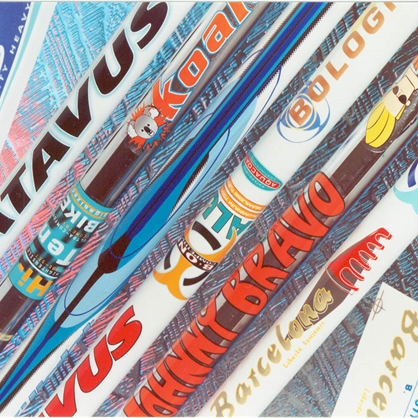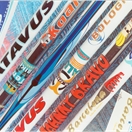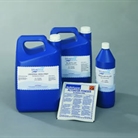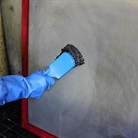Autosol 2000
Autosol 2000 is a purple, high quality, medium solids emulsion supplied with a diazo syrup sensitiser.
Features
- Resistant to a wide range of solvent and UV curing inks. High print quality, durable, wide exposure latitude, easily decoatable, diazo syrup sensitiser.
Benefits
- Proven performance for a wide range of general purpose screen printing applications Autosol 2000 is also is very easy to decoat without the need for a high pressure gun.
Additional Information
See 'How to Guide' for emulsions for detailed advice.
WORKING INSTRUCTIONS & SAFE HANDLING
Sensitising of Emulsion
CAUTION: DIAZO SYRUP SENSITISER CONTAINS ORTHOPHOSPHORIC ACID AND IS CORROSIVE. PLEASE REFER TO MATERIAL SAFETY DATA SHEET BEFORE USE.
Handle Autosol 2000 under yellow fluorescent tubes or low wattage Tungsten light. Autosol 2000 is supplied as a two pack kit comprising the emulsion and syrup sensitiser in a bottle.
Prior to sensitising read ‘Safety data Sheet’.
1. Fill diazo sensitiser bottle ¾ full with clean water, replace cap and shake to dissolve sensitiser.
2. Add the diazo sensitiser solution to the emulsion and stir thoroughly for approximately 2-3 minutes to ensure emulsion is sensitised throughout.
3. Allow the emulsion to de-gas for at least 1 hour before use.
Mesh Preparation
Unused polyester/nylon Autoprep Gel and Universal Mesh Prep
Used polyester/nylon Universal Mesh Prep
Stainless Steel Universal Mesh Prep
Coating & Drying
Stand the screen on edge, angled away from the operator and, using a good quality coating trough, proceed as follows:
1. Apply 2 coats to the underside (print side) of the screen.
2. Apply 2 coats to squeegee side.
3. The screen should be dried horizontally, squeegee side up and stored under dark or yellow light conditions. Dry the screen at a maximum temperature of 30°C (86°F).
4. Additional coatings may be applied to the underside of the screen with intermediate drying.
Exposure
CORRECT EXPOSURE IS ESSENTIAL FOR OPTIMUM STENCIL PERFORMANCE. UNDEREXPOSURE WILL GIVE A WEAK STENCIL AND REDUCE RESISTANCE.
Remove dust from the surface of the stencil and tape positive in position. Place entire screen in a suitable vacuum frame and expose. We recommend use of the Autotype Exposure Calculator for test exposures to ascertain correct timing. Exposure times below should be used as a guide:-
Exposure Time (minutes)*
* Based on 2+2 coating on 90/cm (230/inch) dyed monofilament polyester mesh.
Washout & Drying
Wash out the screen from both sides with a strong spray of water. Continue the washout until all parts of the image appear clean and sharp. Blot off surplus moisture with newsprint or a leather and dry at a maximum temperature of 30°C (86°F).
Spot out blemishes with sensitised emulsion and re-expose screen if using water based inks. For applications using solvent based or conventional UV curing inks, Autotype Blue or Regular Filler can be used.
Stencil Removal
Remove ink from the screen, with Autosolve Graphics, Industrial screen wash. Apply Autostrip to both sides of the screen. Leave standing for 5 minutes. The stencil can then be removed with a strong water jet or high pressure stripper. If a stain or ghost image still remains, use Autokleen Plus.
Product Literature
No related documents
Applications
How to Guides
No related guides







